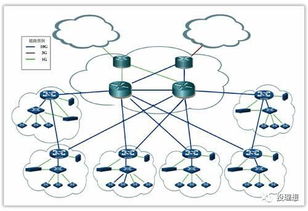关于比特币与区块链
Title: Understanding Blockchain and Bitcoin: A Comprehensive Overview
Blockchain technology and Bitcoin have garnered significant attention in recent years, revolutionizing various industries and reshaping the financial landscape. Understanding these concepts is crucial for anyone seeking insight into the future of finance and technology. Let's delve into what blockchain and Bitcoin entail, their significance, and their potential impact.
What is Blockchain?
Definition:
Blockchain is a decentralized, distributed ledger technology that records transactions across multiple computers in a way that makes them tamperresistant and transparent.Key Features:
1.
Decentralization:
Unlike traditional centralized systems, blockchain operates on a decentralized network of computers (nodes), eliminating the need for intermediaries like banks.2.
Transparency:
All transactions on a blockchain are publicly recorded and verifiable by anyone on the network.3.
Immutability:
Once recorded, data on a blockchain cannot be altered retroactively without the consensus of the network participants.4.
Security:
Blockchain utilizes cryptographic techniques to secure transactions and maintain the integrity of the network.What is Bitcoin?
Definition:
Bitcoin is a digital currency, also known as cryptocurrency, that operates on a blockchain network. It was introduced in 2009 by an anonymous entity or group of individuals using the pseudonym Satoshi Nakamoto.Key Features:
1.
Decentralization:
Bitcoin operates on a peertopeer network without the need for a central authority or government control.2.
Limited Supply:
The total supply of Bitcoin is capped at 21 million coins, making it deflationary in nature.3.
Anonymity:
While Bitcoin transactions are recorded on the blockchain, the identities of the parties involved are pseudonymous, providing a certain level of privacy.4.
Global Accessibility:
Bitcoin transactions can be conducted across borders without the need for traditional banking infrastructure, making it accessible to anyone with an internet connection.How Does Blockchain Work?
1.
Transaction Creation:
A user initiates a transaction by creating a digital signature using their private key, indicating the transfer of Bitcoin or other assets.2.
Validation:
The transaction is broadcasted to the network, where it awaits confirmation by miners.3.
Block Formation:
Validated transactions are grouped into blocks and added to the blockchain through a process called mining.4.
Consensus Mechanism:
Miners compete to solve complex mathematical puzzles to validate transactions and add them to the blockchain. This process ensures the security and integrity of the network.5.
Confirmation:
Once added to the blockchain, transactions are confirmed and cannot be reversed.Use Cases of Blockchain and Bitcoin
1.
Financial Services:
Blockchain technology is revolutionizing the financial industry by enabling faster, more secure, and costeffective crossborder payments, smart contracts, and decentralized finance (DeFi) applications.
2.
Supply Chain Management:
Blockchain facilitates transparent and traceable supply chains, reducing fraud, counterfeit products, and ensuring product authenticity.3.
Healthcare:
Blockchain can securely store and share patient data, ensuring interoperability, privacy, and security of medical records.4.
Identity Management:
Blockchainbased identity solutions offer individuals control over their personal data, reducing the risk of identity theft and fraud.5.
Voting Systems:
Blockchain has the potential to enhance the transparency and integrity of voting systems, preventing tampering and ensuring fair elections.Challenges and Future Outlook
1.
Scalability:
Blockchain networks face scalability issues, limiting their ability to handle a large number of transactions simultaneously. Efforts are underway to develop solutions such as sharding and layertwo protocols to address this challenge.2.
Regulatory Uncertainty:
Regulatory frameworks surrounding blockchain and cryptocurrencies vary significantly across jurisdictions, posing challenges for adoption and compliance.3.
Security Concerns:
While blockchain offers robust security features, it is not immune to attacks. Ongoing research and development are essential to mitigate potential vulnerabilities.4.
Environmental Impact:
The energyintensive process of mining Bitcoin has raised concerns about its environmental impact, prompting the exploration of alternative consensus mechanisms with lower energy consumption.Despite these challenges, the potential of blockchain technology and Bitcoin to transform industries, streamline processes, and empower individuals cannot be overstated. As research and innovation continue to drive advancements in this field, the future holds immense promise for decentralized technologies and their applications across various sectors.
This comprehensive overview serves as a foundational guide for understanding blockchain and Bitcoin, laying the groundwork for further exploration and engagement in this dynamic and rapidly evolving space.











